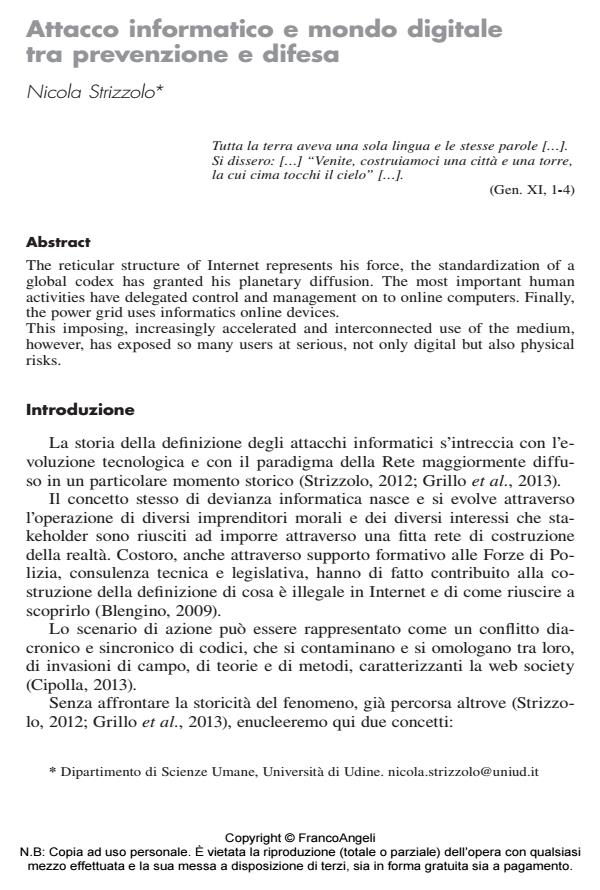Attacco informatico e mondo digitale tra prevenzione e difesa
Titolo Rivista SICUREZZA E SCIENZE SOCIALI
Autori/Curatori Nicola Strizzolo
Anno di pubblicazione 2014 Fascicolo 2014/1
Lingua Italiano Numero pagine 15 P. 38-52 Dimensione file 117 KB
DOI 10.3280/SISS2014-001004
Il DOI è il codice a barre della proprietà intellettuale: per saperne di più
clicca qui
Qui sotto puoi vedere in anteprima la prima pagina di questo articolo.
Se questo articolo ti interessa, lo puoi acquistare (e scaricare in formato pdf) seguendo le facili indicazioni per acquistare il download credit. Acquista Download Credits per scaricare questo Articolo in formato PDF

FrancoAngeli è membro della Publishers International Linking Association, Inc (PILA)associazione indipendente e non profit per facilitare (attraverso i servizi tecnologici implementati da CrossRef.org) l’accesso degli studiosi ai contenuti digitali nelle pubblicazioni professionali e scientifiche
The reticular structure of Internet represents his force, the standardization of a global codex has granted his planetary diffusion. The most important human activities have delegated control and management on to online computers. Finally, the power grid uses informatics online devices. This imposing, increasingly accelerated and interconnected use of the medium, however, has exposed so many users at serious, not only digital but also physical risks.
- The Social Dimension of Cybersecurity in the Public Media Systems of Poland and Italy Anna Makuch, Nicola Strizzolo, in Cybersecurity and Law /2024 pp.200
DOI: 10.35467/cal/188449 - Information Society Services and Their Cybersecurity András Bencsik, Mirosław Karpiuk, Nicola Strizzolo, in Cybersecurity and Law /2024 pp.258
DOI: 10.35467/cal/188446
Nicola Strizzolo, Attacco informatico e mondo digitale tra prevenzione e difesa in "SICUREZZA E SCIENZE SOCIALI" 1/2014, pp 38-52, DOI: 10.3280/SISS2014-001004